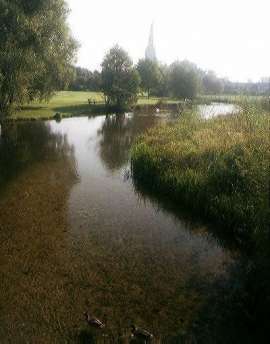Artificially Created Habitats
 We have already mentioned that most of our British countryside today is man-made, much of it consists of a landscape of fields and scattered small woodlands joined together with hedges or wire fences. This farmland is the most man-made part of the countryside but even though it cannot be called truly wild habitat, it is still one of the most important habitats in Britain for wildlife – especially if hedges and trees grow around the fields.
We have already mentioned that most of our British countryside today is man-made, much of it consists of a landscape of fields and scattered small woodlands joined together with hedges or wire fences. This farmland is the most man-made part of the countryside but even though it cannot be called truly wild habitat, it is still one of the most important habitats in Britain for wildlife – especially if hedges and trees grow around the fields.
Fields, hedges, the chalk downlands and the heathlands of Britain only exist because they have been created and managed by people. If left to themselves they would eventually revert to woodlands. If you stopped cultivating your garden it would soon be taken over by small shrubs like bramble; this scrubland would be replaced by fast growing trees such as ash and sycamore. Finally, beech and oak trees would dominate. These changes in plant life in a habitat are called succession and if left alone by humans, it continues until a climax is reached. Oak woodland is the commonest climax vegetation in Britain.
Fresh water habitats in Britain may be ponds, lakes, reservoirs, streams and rivers. Most of them have been either made or changed in some way by humans. Today a pond is regarded as an endangered habitat. For centuries the pond was a necessary part of the British landscape. Nearly every village and farm had a pond and it provided water for both people and farm animals. Nowadays we don’t need ponds for water and most of the old ones, being man-made, have become overgrown with plants, built over or polluted. 50% of the conutry's ponds were lost in the 20th Century. Over 80% of all ponds in this country are now in private gardens or school grounds – they are an essential habitat for many species of animals and plants, including the increasingly rare amphibians – the frogs, toads and newts.
Every habitat has its own particular set of plant and animal species. Together the different species make up a community and they all depend on each other in some way.
Read More: Credits